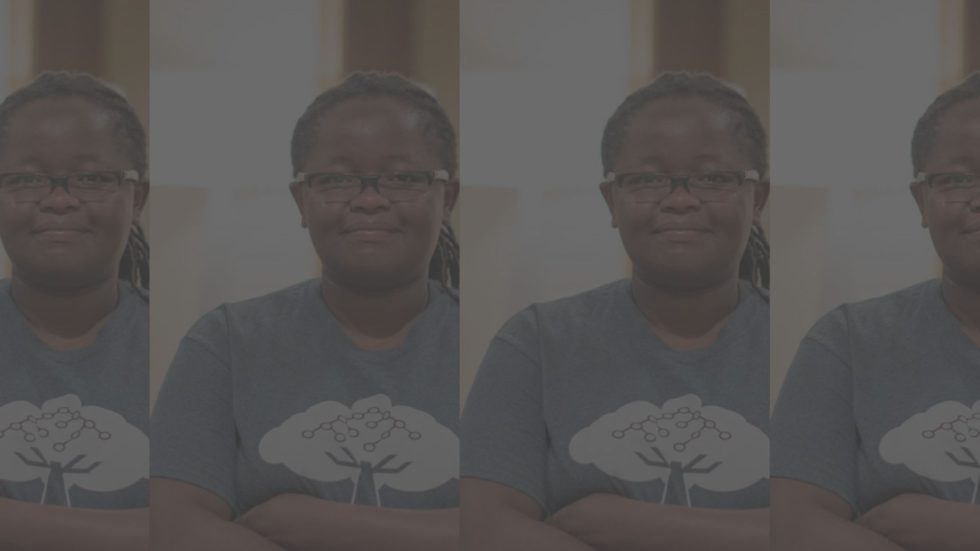
When asked about her experience as an immigrant doctor from Kenya, Assistant Professor of Radiology at Emory University School of Medicine Judy Gichoya spoke of the barriers she faced when she came to the U.S.
“When [most people] hear you have an accent, they assume maybe you don’t know, or that you may not have sufficient information,” Gichoya said. “There’s a lot of stigma around that, because people don’t know what you can do.”
It didn’t matter that she was immensely qualified and had completed an intensive six-year medical school program at Moi University, performed over 116 Caesarian sections, and gained copious amounts of hands-on clinical experience. She was still doubted and dissuaded by others, and she was even told that the “only people who fail are foreign doctors” during her board exam.
However, as an immigrant doctor, Gichoya said that “you just need your chance.” She tells other immigrant medical graduates that they “carry the weight of the world on their shoulders,” but after they wait and finally get the chance to prove themselves, they’re bound to succeed.
“It’s the same advice that we should always have: to be your best, every day,” Gichoya added.
Six years in medical school
In Kenya, after completing high school, students apply to university and are offered slots based on their national examination scores. Gichoya was accepted into Moi University in Eldoret, a town well known for their world-famous long distance runners.
Though she initially aspired to become a pilot, there weren’t any opportunities for such training. According to Gichoya, students who do well in school traditionally become either doctors or engineers, so she decided to pursue medicine.
“I was drawn to that problem-based learning,” Gichoya said. “I felt like I would have more time to figure out my curiosity. I realized I liked that form of learning and thrived, and I ended up enjoying medicine.”
In her first two years of school, she completed her basic science requirements, which included biochemistry and dissection classes. The third year was pathology-oriented, with a specific focus on anatomy and histology. The fourth and sixth years were spent rotating in obstetrics, gynecology, surgery, and medicine, while the fifth year was reserved for subspecialty elective training, such as dermatology, ophthalmology, and radiology.
When Gichoya was in medical school, she didn’t have access to medical imaging equipment. So, students were required to hone in their physical examination skills without the assistance of MRIs and CT scans. Gichoya was urged to use her clinical acumen to come up with a diagnosis, without diagnostic support from imaging technology.
“You weren’t going to get an echo to tell you if there was a [heart] murmur,” Gichoya said. “You knew that there was a murmur — you had listened to it — and you knew that it was probably a metrostenosis. You would just get an echo to maybe help you do the next step.”
Additionally, Gichoya’s training emphasized community-based learning. The Eldoret campus emphasized a public health perspective in addition to clinical expertise, requiring students to dedicate 4-6 weeks to designing a project — such as a toilet — and supervising it to get it done.
The HIV pandemic
While Gichoya was in medical school, the human immunodeficiency virus (HIV) pandemic was afflicting millions of people around the world. Dr. Joe Mamlin, a doctor who had recently retired from Indiana University, had moved to Eldoret to establish the Academic Model for the Prevention and Treatment of HIV/AIDS (AMPATH), which would become one of sub-Saharan Africa’s most comprehensive HIV control programs.
Citing it as a fortuitous event, “right place, right time,” Gichoya began working with Mamlin during her final year in school. When she visited the clinics and learned the real-life applications of her learning, she quickly realized the devastating effects of the virus.
“It’s very deflating when you go to the wards, and you’re like, ‘Oh, this isn’t what you’re reading in the books,’” Gichoya added.
Mamlin had a mantra to lead with care, meaning that all of their research and clinical work was completely centered around the patient. That also meant that they were constantly in the wards and seeing a lot of patients die, a trend that Gichoya compared to the terror of seeing COVID-19 sweep the nation.
The states
Gichoya immersed herself in information technology (IT), but she still centered her work around patient care. So, she decided to pursue health informatics, a field that involved the application of technology and its use in sectors of medicine such as public health and epidemiology.
She eventually immigrated to the U.S. to complete both her Masters of Science in Health Informatics at Indiana University Purdue University and her postdoctoral training in informatics at Regenstrief Institute.
“When I came here, there were a lot of resources and amazing, amazing people,” Gichoya added.
Gichoya’s project involved exploring how to notify the state department about information gathered from disease surveillance — for example, how to relay information concerning an HIV- or syphilis-positive patient.
President Barack Obama had also incentivized hospitals to transition from paper to electronic medical records. It was a good time to be doing work in IT and informatics, Gichoya said, and she would eventually find that her best work would be practicing the intersection of medicine and technology.
Upon matching into radiology, Gichoya returned to Indiana University for her residency. During that period, AI in medicine was quickly rising to the forefront of healthcare innovation, and Gichoya’s program director was very good at allowing her to keep up with both radiology and her IT skills. She quickly realized that her abilities would be best put to use in interventional radiology, which involves the use of imaging techniques to guide minimally invasive surgical procedures.
Prior to arriving at her current role at Emory University Hospital, Gichoya completed a fellowship in interventional radiology at Oregon Health Sciences University in Portland, Oregon. And when she searched for a job that would best fit her expertise, she sought a role that would give her the liberty to explore her own interests.
“I wanted a job that would combine my clinical skills and my informatics skills, and a place that I wouldn’t have to start from scratch,” Gichoya said. “I wanted a lot of freedom to figure out what I personally wanted to study.”
That place would ultimately become the Winship Cancer Institute of Emory University. Under the leadership of Vice Chair for Imaging Informatics Dr. Nabile Safdar, Gichoya was able to flourish as a radiologist at Emory.
“I realized that I’ll be able to thrive here,” Gichoya said. “No one would have to micromanage me or tell me, don’t do this, don’t study this.”
A Kenyan woman in medicine
“I’m now in the most diverse place I could ever work,” Gichoya said, reflecting on her experiences as a black woman in medicine. “Patients are not surprised when they see a black doctor.”
However, her experiences during her fellowship in Portland were very different. Gichoya reported multiple instances of patients who had never seen a black doctor and felt uncomfortable under her care.
Sometimes, Gichoya’s supervisors would ask the patient if something was wrong, and the patient would say yes, but they couldn’t pinpoint exactly what was bothering them. Other times, they would explicitly point to her race, stating simply that “[she was] a black doctor.”
“Being in school can be very daunting, so you don’t need some of that stress added on you,” Gichoya said. “It requires the people around you to recognize what’s happening and to lower the bridges.”
Slowly, Gichoya’s attendings learned how to be more supportive of her. However, that often only entailed telling the patient that she would play an assisting role, which usually made it easier for the patients to come around.
In a time where Gichoya felt very lonely as she dealt with such difficult patients, she struck a friendship with a late patient during her fellowship. He was a motorcyclist who had won multiple awards and rode through Africa when he was already 68 years old.
“I found one of the most accepting patients, who was just an amazing human being,” Gichoya said. “Even if it’s hard, you take care of them when they’re in their most vulnerable situations, and sometimes they really do change your life.”
The overall adjustment to her identity as a black woman in America has been equally challenging, especially contrasting with her stronger ties to her Kenyan identity. Gichoya said that, as an immigrant, she doesn’t always see herself as a black person — in Kenya, people affiliated themselves with tribes, not color.
“It’s been very interesting to see when I’m in the market, and people will be following me to see what [I’m] picking up,” Gichoya said. “You just have to learn what it means to be black.”
The challenges remain, but the passion persists
In procedural services like interventional radiology, Gichoya deals with extremely high-stakes patients. Dealing with complications is one of the toughest things to go through as a proceduralist, and any case can be devastating.
“In medicine, you’re always in the grunts, you’re always in the weeds,” Gichoya said. “You come in as a great artist, and you can play music. But in those four years, you completely lose it.”
Gichoya’s passion for patient care still persists as she continues to work in AI — specifically, examining fairness and bias, and how to fix it. She looks at data and extracts the stories that come out of the dataset, a practice that she’s always been passionate about.
Gichoya said that time is passing, and healthcare workers should make the best of their opportunities. Be in the moment, she added, because you’ve decided to be there.
“Take the moment to appreciate it and take it in,” Gichoya said. “Because it’s a complete honor to take care of patients.”




